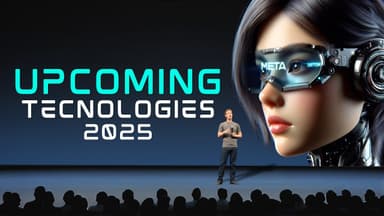Navigating the AI Hype Cycle
As a product marketing manager at Google, I often feel the pressure to stay ahead in the fast-evolving world of AI, but I discovered that the real challenge lies in cutting through the noise to find practical solutions that work.
This story reveals how I turned overwhelm into actionable strategies, helping me build a sustainable approach to AI without getting lost in endless updates or tools.
TL;DR
I struggled with AI tool overload but created a minimum viable toolkit to focus on essentials that boost productivity.
Facing prompt fatigue, I adopted text expanders and workflow integrations to make AI use seamless and efficient.
Overwhelmed by constant updates, I developed the Impact Loop to selectively learn and apply key insights weekly.
Through these strategies, I transformed my AI experience from chaotic to confident, handling 80% of needs with ease.
Now, instead of chasing hype, I build habits that ensure real-world impact without the usual frustration.

I work as a product marketing manager at Google, and the pressure to keep up with AI innovations is intense. Initially, I felt overwhelmed by the constant barrage of product launches and hype, making it hard to pinpoint tools that could genuinely enhance my daily work. For instance, when OpenAI released their latest model, it topped benchmarks, but I realized the older version was faster and cheaper, proving that hype doesn't always translate to practical benefits.
This led me to develop what I call the minimum viable toolkit strategy. I started by identifying my core needs, like faster research on digital advertising trends, where tools like ChatGPT often provided inaccurate results and Gemini's research mode was too slow. After testing options, I settled on Perplexity for its speed, mastering it until it became a staple in my workflow.

Even after selecting the right tools, I faced another hurdle: what I term "death by prompts." I had a great prompt for refining writing, but typing it repeatedly for emails, reports, and more created too much friction, stopping me from using it consistently. The solution came from simple tools like text expanders, which let me summon prompts instantly with a shortcut.
For example, when refining wordy business talking points, I type a code, and the prompt appears, allowing quick edits for better results. I also embed prompts into my workflows, like adding hyperlinks in calendar events for summarizing project updates, which reduced barriers and made AI a natural part of my routine. This approach ensures that prompts are organized based on where I use them, not just where I store them.

Despite these advancements, I still dealt with "update suffocation," an endless flood of information that caused decision fatigue. A colleague once asked if they should dive into new AI features or stick with what they knew, highlighting how overwhelming it all felt. My answer was to implement the Impact Loop, a two-step system starting with selective learning.
I follow trusted curators for daily updates, spending just 5 to 10 minutes reviewing them, and then dedicate time each week to experiment with one new idea. For instance, when I learned about ChatGPT's integration with Notion, I tested it and discovered how it simplified writing formulas, turning passive consumption into actionable habits. This consistent practice has made AI implementation feel manageable and effective.
By focusing on these strategies, I've shifted from feeling behind to confidently integrating AI into my work, ensuring that I address real needs without getting sidetracked.
Ultimately, these approaches have reshaped how I engage with AI, turning potential frustrations into reliable routines that enhance productivity and reduce stress.
Looking ahead, this framework not only keeps me competitive but also opens doors to more innovative applications in my role, fostering a balanced relationship with technology.
Key Takeaways
Overcome AI tools paralysis by building a minimum viable toolkit tailored to essential needs.
Reduce prompt friction using text expanders and workflow embeddings for smoother daily use.
Combat update suffocation with the Impact Loop, emphasizing selective learning and consistent action.











